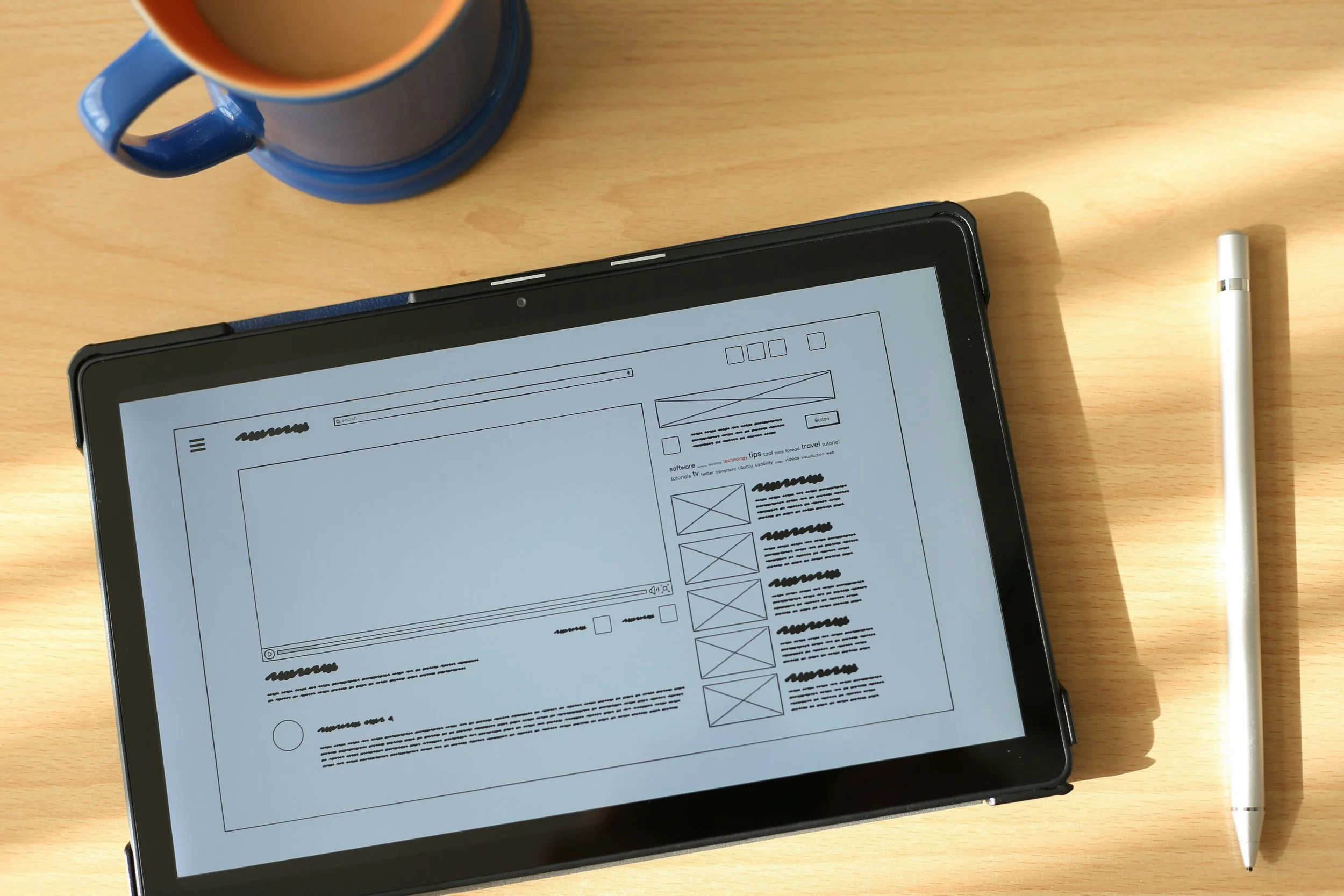Why UX is important (and when to use it)
You’ve probably heard the term “UX” mentioned in meetings, pitch decks, or on agency websites. But what exactly is it? Why should you care about implementing it in your business? Let’s get straight to it and explain what UX actually does, why it affects your bottom line, and how to tell if you need it.
What exactly is UX?
At its simplest, UX, or user experience, is how people act and feel when they interact with your product, website, or brand. It is designing with users in mind (think human-centered design).
Think about the many applications and websites you interact with on a daily basis. Chances are, these were designed with you, the user, in mind. It’s the difference between:
A checkout page that makes paying effortless versus one that makes customers abandon their cart.
A mobile app that feels intuitive versus one that frustrates users until they delete it.
A brand’s site that builds trust and credibility versus one that feels outdated or hard to navigate.
But, UX is not just design. It’s a culmination of research, psychology, design, and business strategy to make sure every interaction works for the user and supports business objectives.
Why UX Matters for Your Business
Here’s the reality: Good UX can make (or save) you money.
More conversions. When people can find and buy what they want quickly and easily, sales can increase.
Lower support costs. Fewer customer frustrations mean fewer support tickets and angry calls.
Stronger brand loyalty. People return to brands that are easy and pleasant to use.
Legal & compliance benefits. Accessibility (following standards like WCAG 2.2) reduces legal risk and expands your audience.
An investment in UX research and design can prevent costly mistakes before its too late. Imagine launching a site that looks beautiful but confuses your customers. Research helps to uncover insights, while design implements these insights. The product lifecycle should be iterative and collaborative. Let’s take a deeper look at what this process looks like.
Team collaboration is a core element of good UX.
The Core Steps of UX
Here’s a list of what UX professionals actually do (in no particular order):
1. Research
UX research is an ongoing process. During the discovery phase, UX teams talk to customers to better understand their audience, user needs, and opportunities. Research methods used during this phase include interviews, focus groups, and diary studies. During the evaluative phase, you can expect to test prototypes, using methods such as A/B testing and usability testing. Other research methods you may have heard about include eye tracking, card sorting, competitive analysis, and heuristic evaluations.
Example: Interviewing five potential customers to understand their attitudes and behaviors while online shopping.
2. Strategy
An important step in the beginning stages of the product lifecycle, UX teams engage with stakeholders to understand business objectives, brainstorm ideas, build roadmaps, and define measures of success.
Example: Collaborating with a local bakery owner who wants to add online ordering to their website. They define a business goal of "launching an online ordering system to capture 25% of daily sales through pre-orders within 3 months".
3. Designing With Purpose
Wireframes, prototypes, and design systems are created based on research, not just guesswork. This process is iterative, meaning you can expect multiple research projects influencing design in various stages of the product lifecycle.
Example: Conducting an A/B test to compare two versions of a signup form. The insights allow researchers and designers to see which version people complete with ease, thus influencing which design to use.
4. Test & Refine
Remember that UX is an iterative process, meaning it doesn’t end at launch. Teams measure performance with analytics, run usability tests, and use actionable insights to improve their product over time. Small improvements, such as refining the Information Architecture, can make a world of difference to your users.
Example: Cutting page load time in half, which improves both conversions and SEO.
UX research is not a linear process.
Real-World UX Wins
E-commerce: A national retailer simplified its checkout flow from 5 steps to 3. Result? A 20% lift in completed orders.
Healthcare: A hospital redesigned its patient portal after research showed older users couldn’t log in easily. Result? Fewer support calls, happier patients.
B2B SaaS: A software company clarified onboarding with in-app tooltips. Result? Trial-to-paid conversions jumped by 15%.
The pattern is clear: when customers succeed, businesses grow.
Common UX Myths you’ve probably heard
“UX is just making things pretty.”
Not exactly. UI (user interface) is about visuals. UX is about the experience. You can have a gorgeous app that people hate using. However, both are important. UI and UX go hand-in-hand.“We don’t need UX, we know our customers.”
Assumptions are dangerous. Even small discovery studies, such as interviews, often reveal surprises that save companies from costly missteps.“UX is too expensive for small businesses.”
UX doesn’t have to mean massive studies. Even a 5-person usability test can reveal 80% of problems.
How UX Fits Into Your Brand & Creative Workflows
At Parthenon Pictures, we think of UX as the bridge between creativity and performance.
A beautifully produced video still needs to live on a landing page where customers know what to do next.
A rebrand isn’t just about colors and logos. It’s about ensuring your site, app, and campaigns all feel consistent to the end user.
Research can guide more than just design. Think: content strategy, marketing workflows, and even product development.
When you integrate UX into your creative process, every campaign or piece of content has a better chance to resonate and convert.
Wire-framing is a foundational step of UX design.
A Quick Self-Check: Do You Need UX Help?
Here are 5 red flags that mean it’s time to bring UX into your business:
Customers drop off halfway through your sales funnel.
Your website looks great but you’re unsure why it doesn’t convert.
Support teams keep answering the same questions about the same issues.
You’re launching a new product but don’t know how users will respond.
You’ve never tested your site or app with actual users, nor do you know who they are.
If any of these sound familiar, UX isn’t a “nice-to-have”, it’s a business priority.
Closing Thoughts
UX is about making your customer’s life easier. When you do that, your business benefits. It’s a win-win.
Whether you’re a startup looking to launch a website, or an established brand ready to refine your digital presence, investing in UX pays for itself many times over.
Parthenon Pictures is not just a creative agency in the Temecula Valley, we make sure every touchpoint is crafted with the user in mind, blending research, strategy, and design to help your local or national brand grow.
Be sure to book a discovery call with our team. We are here to help you elevate your brand.




